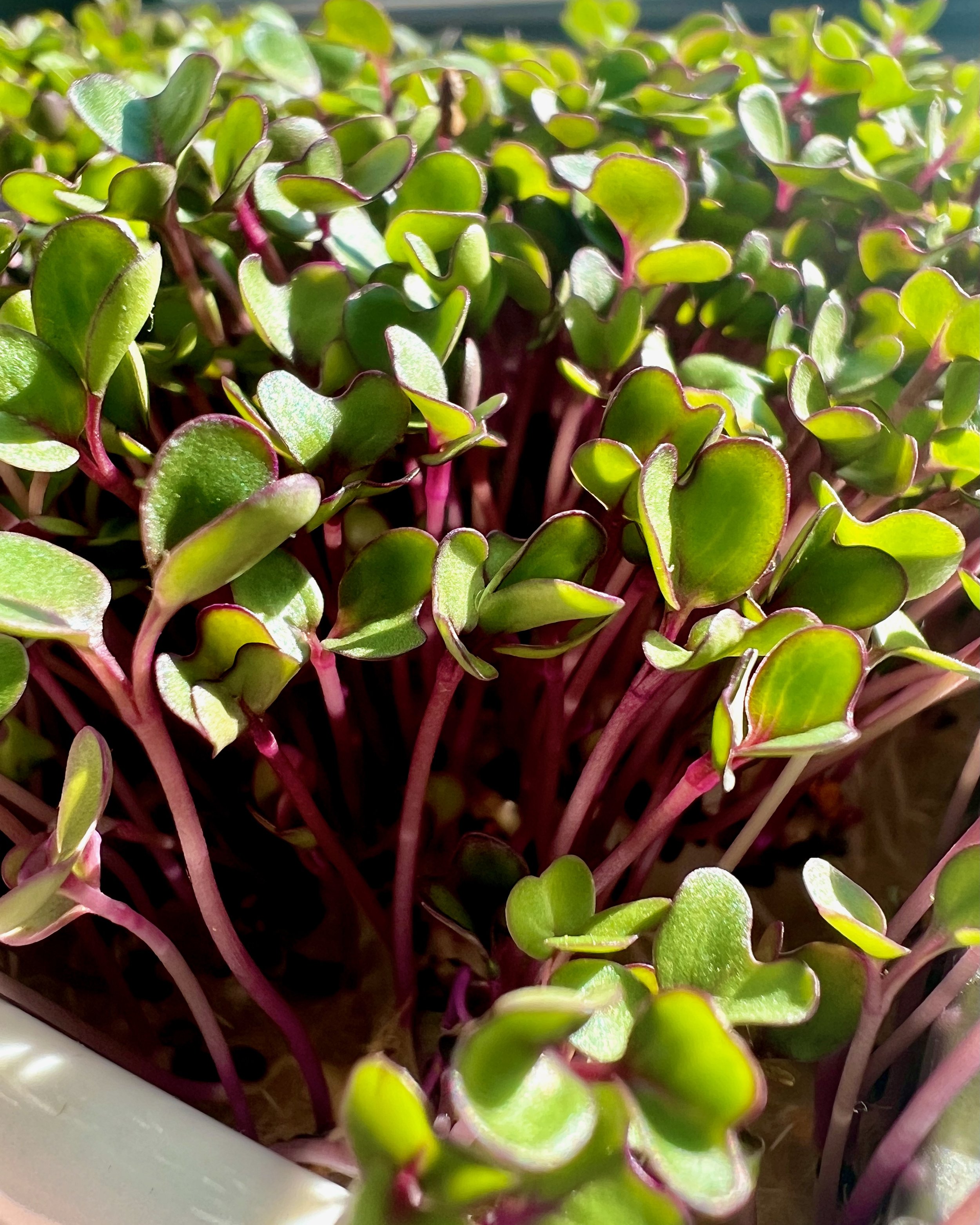Spark big joy with tiny microgreens
This holiday season, let’s infuse a little life and extra self-care into our celebrations. These delicate greens may be called micro, but their impact is anything but.
Elevating the Everyday
Loaded with essential vitamins, antioxidants, and a surprising depth of flavor, microgreens are the ultimate multitaskers. They can provide up to 40x more nutrients than leaves of their mature counterparts- concentrated goodness.
Plus, they are gorgeous. Rainbow chard and beet stems are vibrant and colorful. Tuscan kale has a soft silvery blue hue. Imagine them as a finishing touch on seasonal soup, roasted veggies- or scattered over a charcuterie board. (Martha, is that you?) But hear me when I say that they are so much more than a garnish.
Do they taste good? Yes, yes, yes. Mustard greens are spicy and peppery. Cilantro greens serve up a subtle floral and citrusy freshness, leaning toward its coriander seed beginnings. My teens make their way through a tray of broccoli greens within two meals because they’re that good.
Cultivating Joy
Packages of microgreens don’t come with micro price tags but you can find them at farmers markets, Whole Foods, and Fresh Direct. They are quite easy to grow though- and I’m not just saying that as a professional gardener. Like so many things, growing microgreens can be as straightforward or as complicated as you’d like. All you really need: a shallow tray, a growing medium, seeds, a cover to block light during germination, and a light source.
My trays of microgreens live happily in front of a bright, southeast-facing window—no extra lighting required. But we don’t want leggy sprouts, so if you wouldn’t classify your light as abundant, a full spectrum grow light this would work well. And because we’re harvesting these tender sprouts so quickly, they don’t need to thrive for very long. So you get pretty quick gratification and an invitation to slow down and cultivate something fresh.
In an ideal world, I would grow my microgreens in soil. In an ideal world, my cat wouldn’t dig up microgreens grown in soil. I believe that I sacrifice a little flavor by using bamboo or cococoir mats but sometimes embracing ease is the difference between doing and avoiding.
Important note: when the seeds sprout, they form root hairs. Unfortunately, those can sometimes be mistaken for mold. So I’d say that the hardest part of growing microgreens is knowing the difference in those first few days after sprouting and resisting the urge to toss everything in the bin. Otherwise, they do need fresh water every few days so I wouldn’t set up a new tray ahead of a vacation. The whole process will take about two weeks.
I’ve pulled together some helpful resources to get you started, plus I’m sharing two recipes that are perfect antidotes to the winter greys. If you’re feeling a little intimidated, check out the kits. You may notice that there are a million different ways to grow microgreens and that’s because they are really quite easy. It’s hard to go wrong. Happy growing, big and small! -Kiera
Gardenwell Favorites
Free Growing Guide + Resources: Bootstrap Farmer
Apartment friendly trays: Our Tiny Garden
Subscription: Hamama
Growing medium: VegBed
Seed sources: Pinetree Garden Seeds + Hudson Valley Seed Co
Growing station with lights: Agie Tabletop LED Light Garden
Microgreen cookbook: A Good Water Farms Odyssey
Return to the Gardenwell Journal








Understanding Dormancy. As the days grow shorter and the frost sets in, a fascinating transformation unfolds in your kitchen garden.